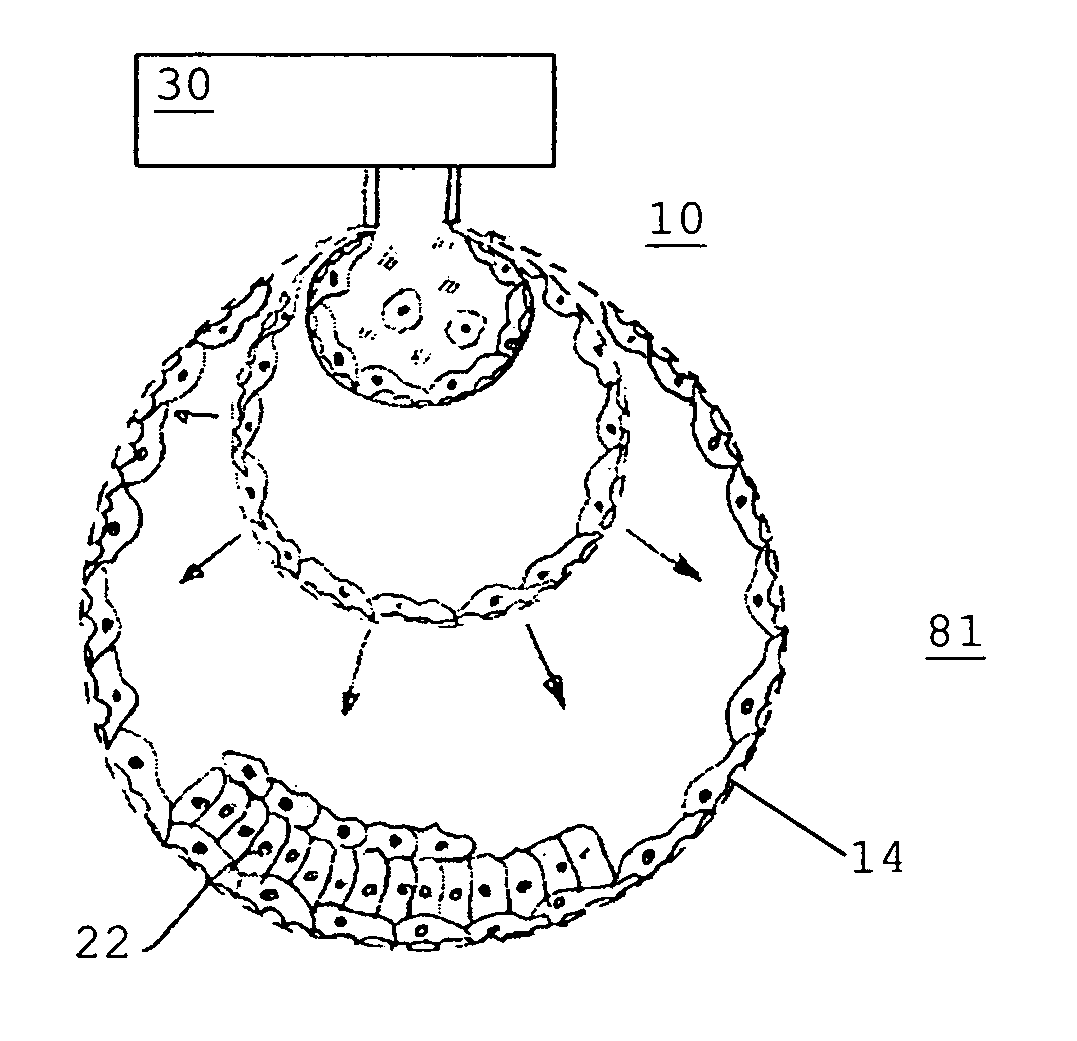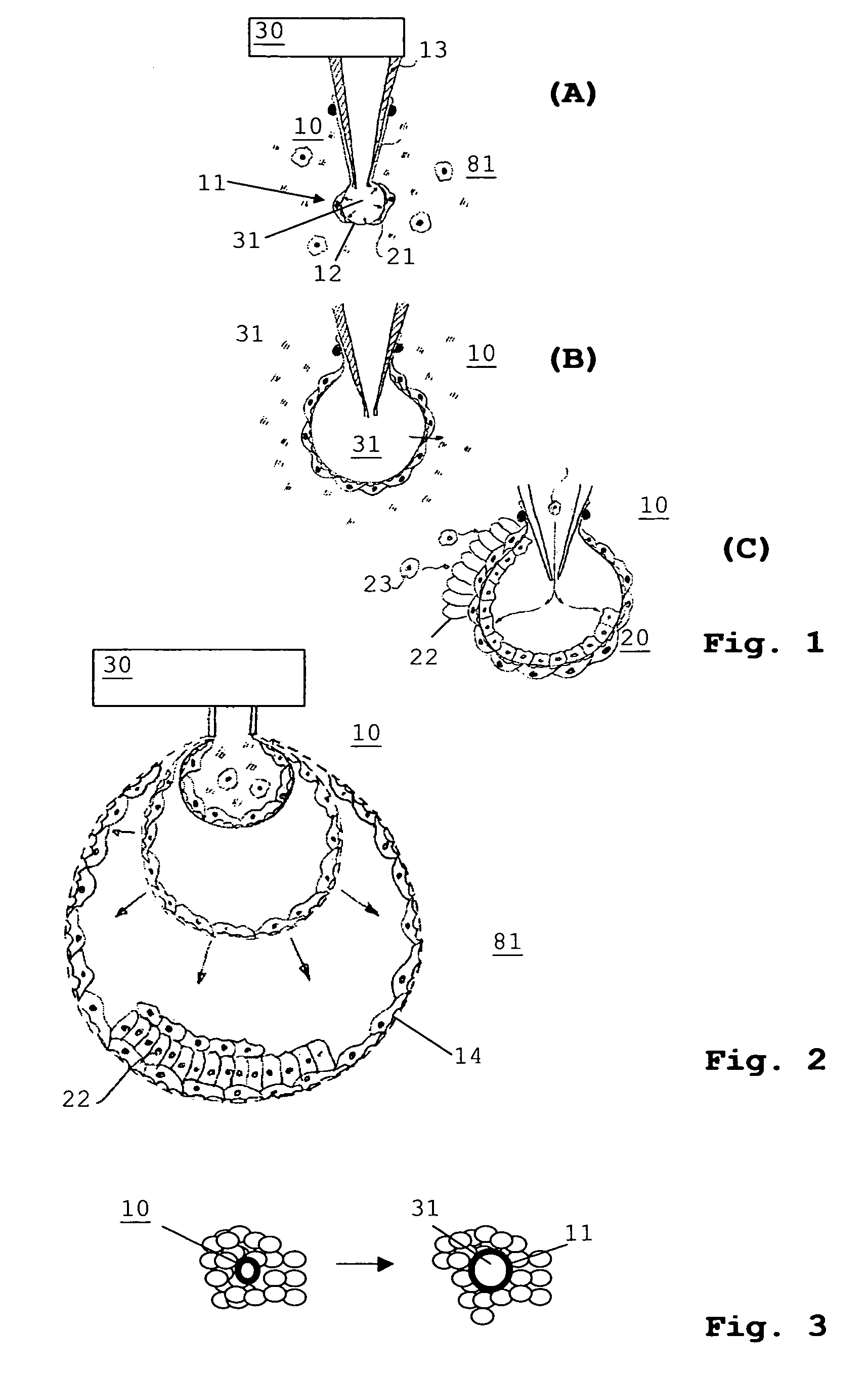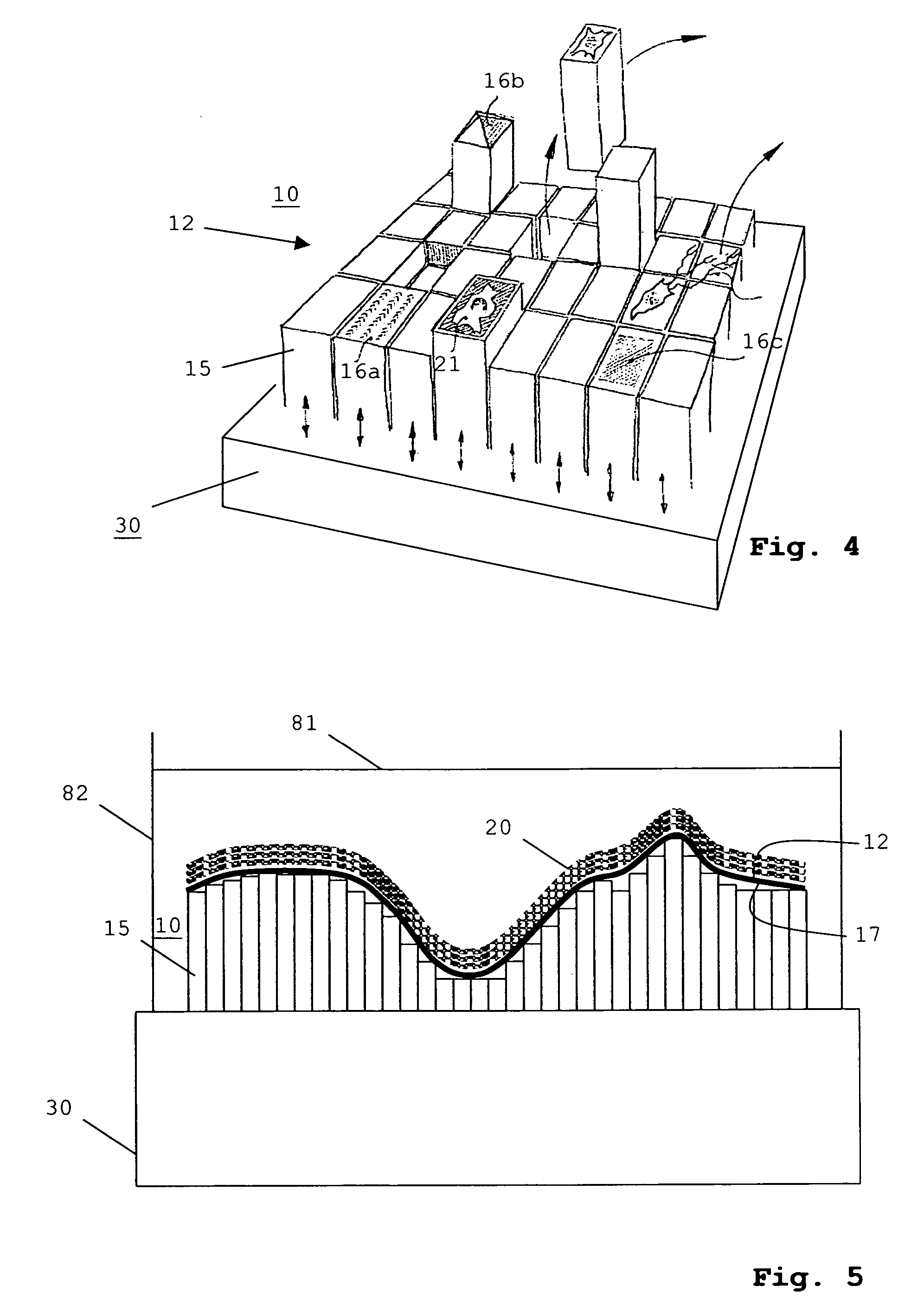Method and device for the formation of biological cell material
a biological cell and material technology, applied in the field of forming, can solve the problem that adhesion-bonded cells may be spatially displaced without injury
- Summary
- Abstract
- Description
- Claims
- Application Information
AI Technical Summary
Benefits of technology
Problems solved by technology
Method used
Image
Examples
Embodiment Construction
[0037]FIGS. 1 and 2 illustrate the principle according to the present invention of generating hollow spheres or other hollow geometries from cell material in a predefined way. For this purpose, a manipulation tool 10 is provided having an elastic, hollow tool body 11 and a pressure line 13, via which an external pressure source 30 (only shown in partial image A) is connected to the interior 31 of the tool body 11. The schematically shown pressure source 30 forms an setting device for adjusting the surface 12 of the tool body 11. It comprises a liquid reservoir and a pump, for example.
[0038]The tool body 11 forms a balloon made of rubber, for example, which has a diameter of 0.01 mm in the relaxed state, for example, and may have diameter of up to 100 mm in the stretched state, for example. A capillary made of steel or glass, for example, is used as the pressure line 13. If the material of the tool 10 comprises partially-permeable, elastic plastic material (e.g., silicone membrane), ...
PUM
| Property | Measurement | Unit |
|---|---|---|
| velocity | aaaaa | aaaaa |
| diameter | aaaaa | aaaaa |
| velocity | aaaaa | aaaaa |
Abstract
Description
Claims
Application Information
 Login to View More
Login to View More - R&D
- Intellectual Property
- Life Sciences
- Materials
- Tech Scout
- Unparalleled Data Quality
- Higher Quality Content
- 60% Fewer Hallucinations
Browse by: Latest US Patents, China's latest patents, Technical Efficacy Thesaurus, Application Domain, Technology Topic, Popular Technical Reports.
© 2025 PatSnap. All rights reserved.Legal|Privacy policy|Modern Slavery Act Transparency Statement|Sitemap|About US| Contact US: help@patsnap.com



